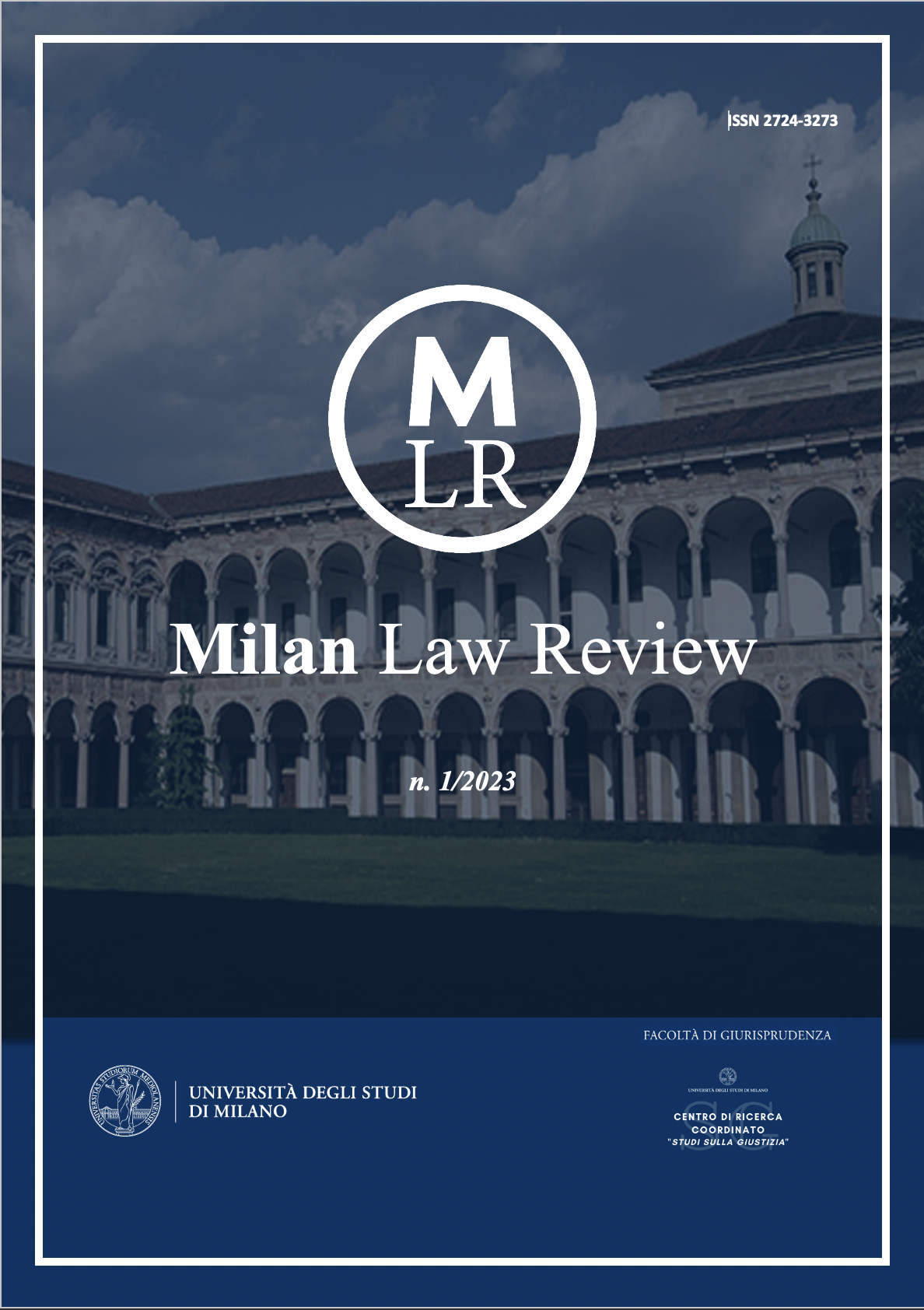“Ulpianus scripsit”? Using Artificial Intelligence for authorship attribution of ancient Roman law texts
DOI:
https://doi.org/10.54103/milanlawreview/20656Keywords:
artificial intelligence, machine learning techniques, sources of Roman law, Ulpian, authorship attributionAbstract
The present article seeks to demonstrate the usefulness of artificial intelligence for the exploration of the sources of Roman law. In a small experiment, a so-called support vector machine was employed to determine to which Roman jurist a given source text can be attributed. While the results were not perfect, they are sufficient to show the potential of new technologies for future research in the area.
References
M. Avenarius, Der pseudo-ulpianische liber singularis regularum, Wallstein, Göttingen, 2005.
M. Barberis, Giustizia predittiva: ausiliare e sostitutiva. Un approcio evolutivo, in Milan Law Review, 2022, vol. 3, p. 2–18.
K.P. Bennet, C. Campbell, Support vector machines: Hype or hallelujah?, in ACM Special Interest Group on Knowledge Discovery in Data Newsletter, 2000, vol. 2, p. 1–13.
H. Craig, Stylistic analysis and authorship studies, in S. Schreibmann, R. Siemens, J. Unsworth (eds.), A Companion to Digital Humanties, Wiley, Hoboken, 2008, p. 273–288.
G. Dwyer, Yelp reviews: Authorship attribution with Python and scikit-learn, in Michael Kennedy on Technology, https://blog.michaelckennedy.net/2017/06/21/yelp-reviews-authorship-attribution-with-python-and-scikit-learn/ (last visited on 9 January 2023).
T. Honoré, Emperors and Lawyers, 2nd ed., OUP, Oxford, 1993.
T. Honoré, Some simple measures of richness of vocabulary, in ALLC Bulletin, 1979, vol. 7, p. 172–179.
T. Honoré, Ulpian: Pioneer of Human Rights, 2nd ed., OUP, Oxford, 2002.
Th. Joachims, Text categorization with support vector machines: learning with many relevant features, in C. Nédellec, C. Rouveirol (eds.), Machine Learning: ECML-98, Springer, Heidelberg, 1998, p. 137–142.
J. Kabala, Computational authorship attribution in medieval Latin corpora: the case of the Monk of Lido (ca. 1101–08) and Gallus Anonymous (ca. 1113–17), in Language resources & Evaluation, 2020, vol. 54, p. 25–56.
G. Klingenberg, Die Romtext-Datenbank, in Informatica e diritto, 1995, vol. 4, p. 223–232.
D. Liebs, Ulpiani Regulae – Zwei Pseudoepigrafa, in Romanitas – Christianitas. Untersuchungen zur Geschichte und Literatur der römischen Kaiserzeit. Johennes Straub zum 70. Geburtstag, Walter De Gruyter, Berlin – New York, 1982, p. 282–292, revised version at https://freidok.uni-freiburg.de/dnb/download/8684 (last visited on 9 January 2023).
H. Love, Attributing Authorship, CUP, Cambridge, 2002.
L. Müller, L’ordinateur et les textes de droit Romain, in Revue – Organisation internationale pour l'étude des langues anciennes par ordinateur,1100/1800, 1968, p. 65–82.
F. Pedregrosa et alii, Scikit-learn: machine learning in Python, in Journal of Machine Learning Research, 2011, vol. 12, p. 2825–2830.
R. Repnow, Überlegungen zur quantitativen Stilanalyse römischer Rechtstexte, in SDHI, 2017, vol. 83, p. 101–129.
Th. Rüfner, Juristische Herausforderungen der Künstlichen Intelligenz aus der Perspektive des Privatrechts, in H.-G. Dederer, Y-Ch. Shin (eds.), Künstliche Intelligenz und juristische Herausforderungen, Mohr Siebeck, Tübingen, 2021, p. 15–42.
F.C. von Savigny, Vom Beruf unserer Zeit für Gesetzgebung und Rechtswissenschaft, Mohr und Zimmer, Heidelberg, 1814.
Downloads
Published
Issue
Section
License
Copyright (c) 2023 Milan Law Review

This work is licensed under a Creative Commons Attribution-NonCommercial-NoDerivatives 4.0 International License.




